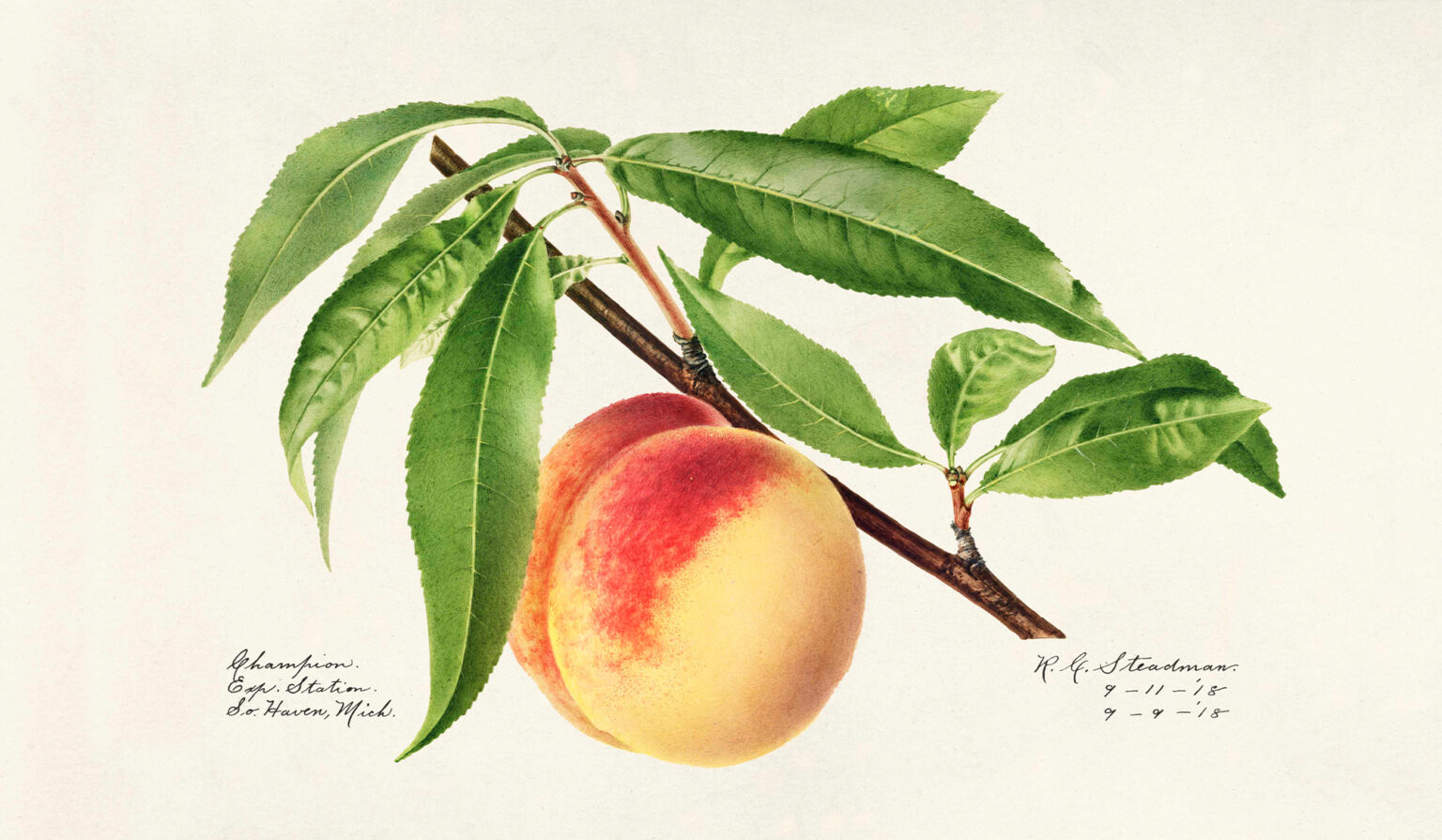From Open Culture:
In 1886, long before color photography was a viable option, the US Department of Agriculture engaged approximately 21, mostly female illustrators to create realistic renderings of hundreds of fruit varieties for lithographic reproduction in USDA articles, reports, and bulletins. According to the Division of Pomology’s first chief, Henry E. Van Deman, the artists’ mandate was to capture “the natural size, shape, and color of both the exterior and interior of the fruit, with the leaves and twigs characteristic of each.”
If a specimen was going bad, the artist was under strict orders to represent the damage faithfully – no prettying things up. As Alice Tangerini, staff illustrator and curator for botanical art in the Smithsonian’s National Museum of Natural History writes, “botanical illustrators and their works serve the scientist, depict(ing) what a botanist describes, acting as the proofreader for the scientific description:”Digital photography, although increasingly used, cannot make judgements about the intricacies of portraying the plant parts a scientist may wish to emphasize and a camera cannot reconstruct a lifelike botanical specimen from dried, pressed material… the thought process mediating that decision of every aspect of the illustration lives in the head of the illustrator.Primary contributors Deborah Griscom Passmore, Mary Daisy Arnold, Amanda Almira Newton and their colleagues established norms for botanical illustration with their paintings for the USDA’s Pomological Watercolor Collection, simultaneously providing much-needed visual evidence for cultivators wishing to establish claims to their varietals.
…the illustrator also has an eye for the aesthetics of botanical illustration, knowing that a drawing must capture the interest of the viewer to be a viable form of communication. Attention to accuracy is important, but excellence of style and technique used is also primary for an illustration to endure as a work of art and science.
(Fruit breeders’ rights were formally protected with the establishment of the Plant Patent Act of 1930, which decreed that anyone who “invented or discovered and asexually reproduced any distinct and new variety of plant” could receive a patent.) The collection’s 7,497 watercolors of realistically-rendered fruits capture both the commonplace and the exotic in mouthwatering detail. (Read more.)
Share




















No comments:
Post a Comment